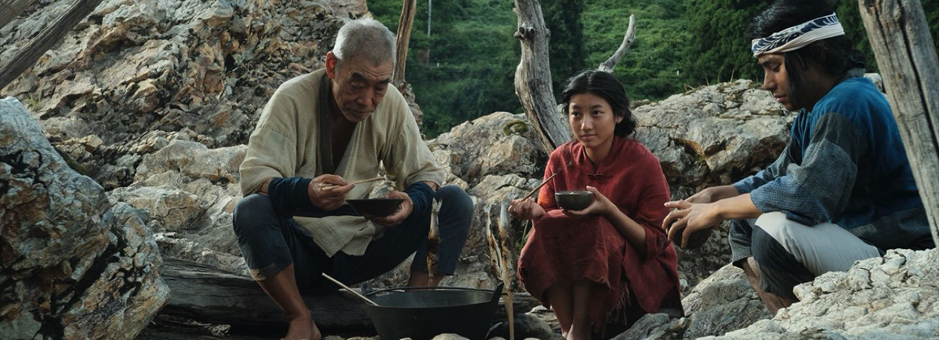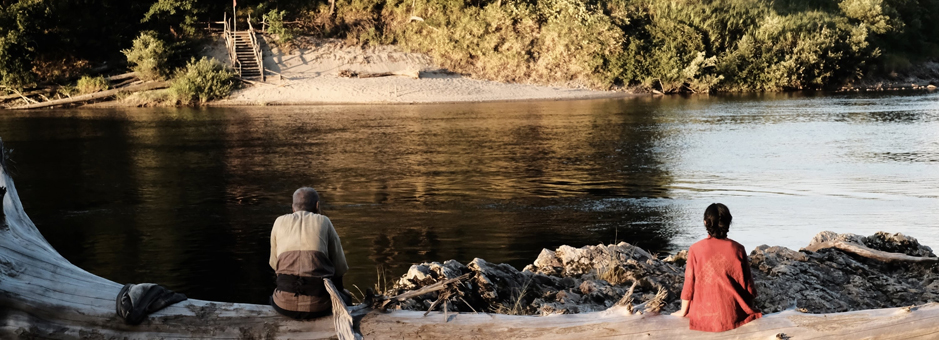Case Studies
Australian DoP Christopher Doyle and Japanese Colourist Soichi Satake bring colour to ‘They Say Nothing Stays the Same’
They Say Nothing Stays the Same marks an accomplished debut for Director Joe Odagiri. With stunning visuals and a stellar cast, the movie has already collected several film festival awards.
Renowned colourist Soichi Satake, from Toei Digital Lab in Tokyo, shares his creative journey from on-set to final colour. Toei has six Baselight grading systems as well as FLUX Store, all connected via a cloud network to share projects.
Soichi joined the company in 2005, where he was given the chance to learn his trade as the Japanese film industry shifted its workflow towards digital intermediate. His credits include feature films such as Farewell Song, Paradise Next and The Blood of Wolves.
How did you come to this project? At what point did you get involved with the film?
From the pre-production phase, producer Takuro Nagai was looking for a colourist who spoke both English and Japanese so that the production team could do the colour grading sessions without dealing with a translator. Not many colourists speak English in Japan, and I’ve also had previous experience conducting colour grading sessions with clients overseas. This is how the filmmakers came to us.
As a DI facility, it is important to provide an environment where there is no language barrier so that everyone – the DoP, the Director, the producers etc. – can concentrate on creativity. Director Joe Odagiri also speaks English, so the entire session was in English.
What was the collaboration like with DoP Christopher Doyle?
Working with Chris-san was encouraging. The first thing he told me was: “Forget about the dailies look and show me your stuff”. This is quite an unusual request from a cinematographer – at least in Japan. That meant I could bring my own creativity and personal ideas to the project.
Can you tell us more about the development of the look?
I had an opportunity to visit the shooting location – a rural area in Nigata – while the movie was in production. I had never been there before and even didn’t know that this place existed. It was so beautiful and authentic; I was really surprised to discover such authenticity left in the heart of Japan.
I had never been involved at such an early stage of filmmaking either, being on-site during the shooting, so I got even more excited to grade the film. While I was there, I had various discussions with Chris-san and Odagiri-san. They told me, for instance, that the movie was shifting to a love story as they were progressing over the shooting each day. For me, it was a unique experience to share their thoughts during the production phase as I usually receive feedback and thoughts afterward. Therefore, I had a really good understanding of the way they wanted to tell the story.
This helped me develop the initial look. Chris-san referred to older classic Japanese films from the 60s and 70s. Toei’s historical films from this period had contrast characteristics and deep green foliage, so I used them as my main references. Baselight's Texture, Shader and Add Grain tools were especially useful to create this kind of look and feel.
How does the use of contrasting colours serve the narrative?
Red is the most important colour in this film, and we talked about it a lot during our sessions. During the summer scenes, the colour green of the trees and the blue for the sky represent nature and people’s life in the countryside, where life and mood seem timeless. In opposition, the mysterious girl in a red costume, along with the red brick bridge, both symbolise alien elements in such a monotonous routine. In the winter scene, everything was covered in snow so the red stands out even more with fire and blood. All of the elements in red push the story forward.
Therefore, I paid a lot of attention to the colour balance and saturation level of red and its counter-colour, while at the same time creating the feel of an old Japanese film.
How did you work the ghost and nightmare scenes compared to the rest?
For the ghost scene, we tried to create an ambiguous atmosphere, between illusion and actually seeing a ghost. I used Chroma Warp in the Shader operator around the ghost silhouette to help give it the feel of an illusion. For the nightmare scene, it was important to highlight blood and fire combined, so I used the Hue Angle and DKey isolation tools in Baselight to achieve that, as well as shapes.
What has been the most challenging part of the project?
Only limited shots and CGI shots were sent to the VFX department, so a lot of compositing work to remove elements was done directly in Baselight. Also, being on a tight schedule, I had to do this work at the same time as the colour grading sessions. I didn’t want to spend too much time erasing things in front of the DoP/Director. It was tough, but thanks to Baselight’s Paint operator and tracking, I managed to get it done on time.
Which Baselight tools did you use the most and why?
I used Base Grade for the initial balance on every shot. In my opinion, it gives a natural feel for exposure and colour balance. Then I used Texture Equaliser to reduce the digital enhancements of modern digital cameras, and Add Grain across the entire film. I also used Colour Cross-talk to tweak certain colours. And Paint, not only for removing/erasing operations but for creating masks as well.
What’s next for you?
I’m going to grade two new horror movies by director Takashi Shimizu. This is my second and third collaboration with him and I’m very excited.
“The first thing Chris-san told me was: ‘Forget about the dailies look and show me your stuff’. This is quite an unusual request from a cinematographer – at least in Japan. That meant I could bring my own creativity and personal ideas to the project.”
Download
They Say Nothing Stays the Same Case Study (PDF)








